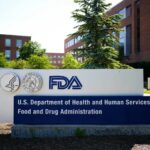By Sheramy Tsai
Your morning cereal, the school lunches your children consume, the dietary advice flashing across screens, are all potentially shaped by unseen financial entanglements, alleges a new report.
The Dietary Guidelines Advisory Committee (DGAC), a group instrumental in sculpting the nation’s eating habits, finds itself in controversy as new evidence suggests a tangible, disconcerting link between our dietary guidelines and the financial interests of major food and pharmaceutical entities. How deep do these hidden ties go, and at what cost to our nation’s health?
The Financial Entanglements Molding U.S. Dietary Guidelines
A group of 20 experts, known as the Dietary Guidelines Advisory Committee (DGAC), has a powerful influence over what Americans are told to eat and avoid to stay healthy. Every five years, this committee looks at the newest research on nutrition and uses it to create dietary advice for the country.
The DGAC’s directives ripple through federal nutrition initiatives, impacting programs like the National School Lunch Program and the $119.5 billion Supplemental Nutrition Assistance Program (SNAP), thereby molding our eating habits at home and in public spaces.
U.S. Right to Know (USRTK), a non-profit organization focusing on public health research, has unearthed unsettling findings: hidden financial relationships among DGAC members and major entities in the food and pharmaceutical sectors.
A complex web reveals DGAC’s ties to industry giants like Abbott and Novo Nordisk, potentially linking policy advice to those with a financial interest in the guidance. Other affiliations include Weight Watchers, Nestlé Nutrition Institute, The National Dairy Council, and Beyond Meat.
The USRTK report reveals 9 of the 20 DGAC members have verified conflicts of interest (COI) due to ties to pivotal industry players. Another four present potential conflicts due to their connections to certain organizations and companies, raising questions about how unbiased their advice to the committee might be.
The report, limited by available and often voluntary disclosures, may not reveal the full extend of the issue and only offers a five-year glimpse into potential industry influence.
Gary Ruskin, executive director of USRTK, told The Epoch Times the dietary guidelines should be free of any industry influence.
“We Americans are awash in sales pitches from the food and drug industries. We don’t want our dietary guidelines to be just one more of those. They should be the place where Americans get the truth about what to eat to live long, strong, and healthy lives.”
There’s a tiny glimmer of hope: the report says that seven members of the 2025 DGAC had no financial conflicts in the last five years, while four had only one possible conflict each, from accepting grants from food companies to being involved in journals funded by companies. This is an improvement from a 2022 study, which found that 19 out of 20 of the 2020 DGAC members had financial conflicts of interest.
The report stresses that we need to make the DGAC selection process better and manage these financial conflicts, with oversight from the USDA and HHS. A staunch warning resides within its pages: “Until this occurs, the public cannot have confidence that the panel’s recommendations to the U.S. government are free of influence from food, beverage, and pharmaceutical companies.”
The Pressure Builds: Calls for Transparency
The start of 2023 saw rising concerns and urgent calls from various sectors for transparency in developing the 2025-2030 dietary guidelines.
In January, 2023, 15 organizations, including Center for Science in the Public Interest and the Physicians Committee for Responsible Medicine, issued a letter to the U.S. Department of Health and Human Services calling for changes to the way the guidelines were drafted, and who was involved.
The groups referenced a 2017 report from the National Academy of Sciences, Engineering, and Medicine (NASEM) and demanded that any financial conflicts of interest among the 2025 Dietary Guidelines Advisory Committee members be made public so the public could trust the eating guidelines delivered.
In March 2023, Senator Chuck Grassley stepped into the conversation with a letter to HHS and USDA spelling out his worries about possible industry ties. Senator Grassley demanded a thorough investigation into how conflicts of interest are handled and a full explanation of what measures are taken to keep industry influence out of the DGAC member selection process.
Seemingly yielding to pressure, the HHS and USDA eventually disclosed the 2025 DGAC members’ industry relationships. However, critics argue these revelations were far from comprehensive and offered only aggregated, voluntarily submitted information that failed to detail individual members’ conflicts.
Senator Grassley pushed the point that while committee members have willingly shared their financial ties, the info vaguely displays the conflicts without naming names. In a follow-up letter in May, Grassley cautioned that ignoring calls for transparency could weaken the trust in nutritional advice for policymakers and families, a viewpoint he maintains.
“HHS and USDA have made insufficient efforts to comply with the NASEM recommendations. Congress has a right to full transparency to ensure that DGAC’s members are working in the best interests of Americans’ dietary needs. No new dietary recommendations should be written until transparency into each DGAC member’s potential conflicts of interest is provided,” Senator Grassley’s office told The Epoch Times.
A Closer Look: Committee Members in the Hot Seat
In the spotlight of escalating controversy is Dr. Fatima Cody Stanford, an obesity doctor at Massachusetts General Hospital. She has affiliations with major pharmaceutical companies like Novo Nordisk, Eli Lilly, and Pfizer, accumulating $68,880 in consulting fees from 2018 to 2022. Stanford, a vocal advocate in the medical community for weight-loss drugs, underscores what she perceives as a genetic inevitability of obesity.
“The number one cause of obesity is genetics,” she asserted in a 60-Minutes interview, pointing to a 50 to 85 percent likelihood of inheriting obesity even with optimal diet and exercise. “Doctors do not understand obesity,” Dr. Stanford concludes.
Another Dietary Guidelines committee member, Dr. Heather Eicher-Miller, a professor at Purdue University, navigates through her own financial entanglements with key industry players. Her ties to Mead Johnson, a leading infant formula manufacturer, and a $240,821 research grant from Eli Lilly spotlight a complex mesh of scientific research and industry interests.
Neither Dr. Stanford nor Dr. Eicher-Miller responded to emailed questions. While the HHS and the USDA also did not respond to inquiries about the subject from The Epoch Times, they did address concerns in an April 28th letter to Senator Charles E. Grassley, affirming the adherence to strict vetting and ethical guidelines in selecting the committee members.
The letter underscored the thoroughness in ensuring that the committee members, appointed as special government employees, complied with extensive federal ethics laws, and transparently reported any potential financial conflicts of interest. Emphasizing the committee’s commitment to transparency and integrity, the letter noted, “HHS ethics officials identified no unresolvable conflicts of interest or other problems under applicable federal ethics laws and regulations.”
Battling the Giants: The Struggle Against Industry Influence
The food industry’s influence on dietary guidelines has long ignited suspicion and debates about potentially warped recommendations crucial for maintaining public health.
A striking case in point is the sugar industry. During a cloudy episode in the 1960s, the Sugar Research Foundation (known today as the Sugar Association) is accused of sponsoring studies that minimized sugar’s role in heart disease, instead allocating blame predominantly to fats. What ensued? Dietary guidance that minimized the health risks of sugar, directing attention toward fats.
A robust array of research demonstrates a connection between ultra-processed foods and a spectrum of health issues, extending from obesity to overall mortality. Yet, financial entanglements that may influence vital public health advice continues to cloud the landscape of dietary policy in America.
“The issue of obesity has spiraled in the United States,” said Mr. Ruskin, spotlighting the nation’s surging health crises. “More than 40 percent of the U.S. population is grappling with obesity. Roughly 1 in 10 Americans contend with diabetes, while about 1 in 3 are teetering on the edge with pre-diabetes.”
Navigating the Murky Waters of Transparency
“Why should Americans trust a report produced by people with so many conflicts of interest?” Mr. Ruskin asks.
Trust in regulators and other public institutions has withered in recent decades. Rebuilding that trust is no small feat, but the USRTK report outlines a path, providing six recommendations. Paramount among them is an unequivocal directive: avoid appointing members with conflicts of interest. Transparency, it stresses, must reign supreme.
Shifting towards stark openness requires unveiling members’ conflicts spanning the previous five years. Next, it’s about swapping out the current Office of Government Ethics (OGE) form 450, criticized for its obfuscating confidentiality, with a method that offers crystal clear disclosure. The report also suggests allowing the public to have a look at the list of possible committee members, which is what the NASEM report recommends.
The report doesn’t just point fingers but urges congress to widen the Physician Payments Sunshine Act to shine a light on the nutrition field. This move promises to reveal financial interests and could curtail subtle biases in dietary guidance.
“There is so much corporate money sloshing around under the surface in the nutrition field,” said Ruskin. “The nutrition field acts like it’s for sale. Transparency isn’t the whole answer, but it’s a crucial first step toward crafting dietary advice Americans can trust.”



![FDA Withholding Autopsy Results on People Who Died After Getting COVID-19 Vaccines | USNN World News The U.S. Food and Drug Administration (FDA) is refusing to release the results of autopsies conducted on people who died after getting COVID-19 vaccines. The FDA says it is barred from releasing medical files, but a drug safety advocate says that it could release the autopsies with personal information redacted. The refusal was issued to The Epoch Times, which submitted a Freedom of Information Act for all autopsy reported obtained by the FDA concerning any deaths reported to the Vaccine Adverse Event Reporting System following COVID-19 vaccination. Reports are lodged with the system when a person experiences an adverse event, or a health issue, after receiving a vaccine. The FDA and other agencies are tasked with investigating the reports. Authorities request and review medical records to vet the reports, including autopsies. The FDA declined to release any reports, even redacted copies. The FDA cited federal law, which enables agencies to withhold information if the agency “reasonably foresees that disclosure would harm an interest protected by an exemption,” with the exemption being “personnel and medical files and similar files the disclosure of which would constitute a clearly unwarranted invasion of personal privacy.” Federal regulations also bar the release of “personnel, medical and similar files the disclosure of which constitutes a clearly unwarranted invasion of personal privacy.” The Epoch Times has appealed the denial, in addition to the recent denial of results of data analysis of VAERS reports. ‘Easily Be Redacted’ Kim Witczak, a drug safety advocate who advises the FDA as part of the Psychopharmacologic Drugs Advisory Committee, said that the reports could be released with personal information blacked out. “The personal information could easily be redacted without losing the potential learnings from [the] autopsy,” Witczak told The Epoch Times via email. People make the choice to submit autopsy results to the Vaccine Adverse Event Reporting System, Witczak noted. “If someone submits their experience to VAERS they want and expect to have it investigated by the FDA. This includes autopsy reports,” she said. Autopsies are examinations of deceased persons performed to determine the cause of death. “Autopsies can be an important part of postmortem analysis and should be done especially with increased deaths following COVID-19 vaccination,” Witczak said. FDA Responds An FDA spokesperson noted that deaths following COVID-19 vaccination are rare, citing the number of reports made to VAERS. As of Sept. 14, 16,516 reports of death following COVID-19 vaccination have been reported. Approximately 616 million doses have been administered in the United States through September. The spokesperson declined to say whether the FDA would ever release the autopsy results, but pointed to a paper authored by researchers with the FDA and the Centers for Disease Control and Prevention (CDC). The paper, which has not been peer reviewed, analyzed the approximately 9,800 reports of death to VAERS following COVID-19 vaccination lodged from Dec. 14, 2020, to Nov. 17, 2021. Researchers found that reporting rates were lower than the expected all-cause mortality rates. “Trends in reporting rates reflected known trends in background mortality rates. These findings do not suggest an association between vaccination and overall increased mortality,” the researchers wrote. The researchers noted that prior studies have found that adverse events reported to VAERS are an undercount of the true number of events.](https://www.usnn.news/wp-content/uploads/2022/09/FDA-Withholding-Autopsy-Results-on-People-Who-Died-After-Getting-COVID-19-Vaccines-150x150.jpg)


